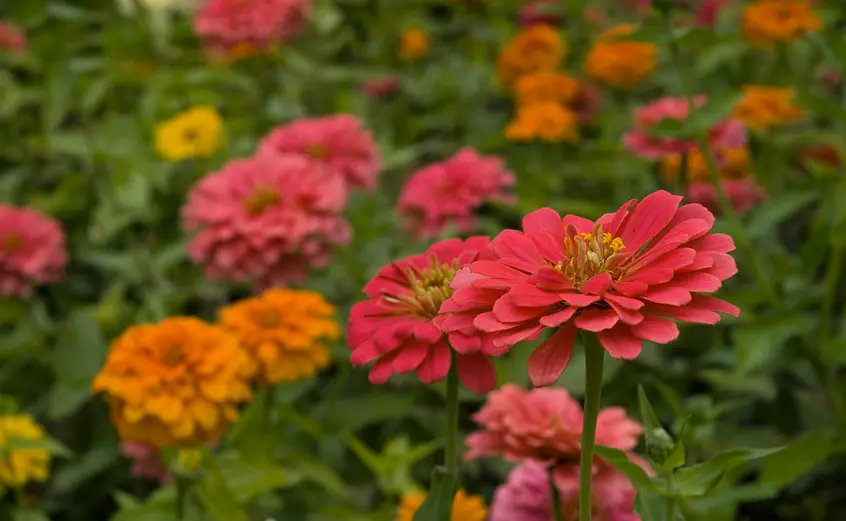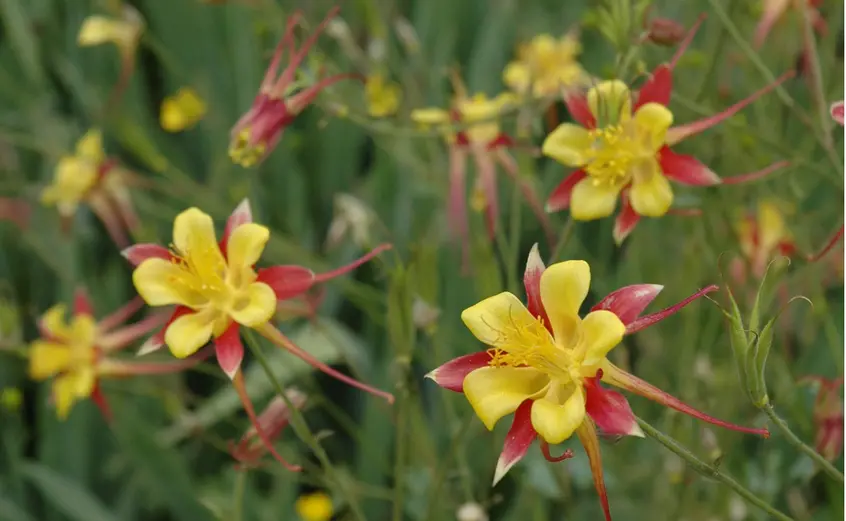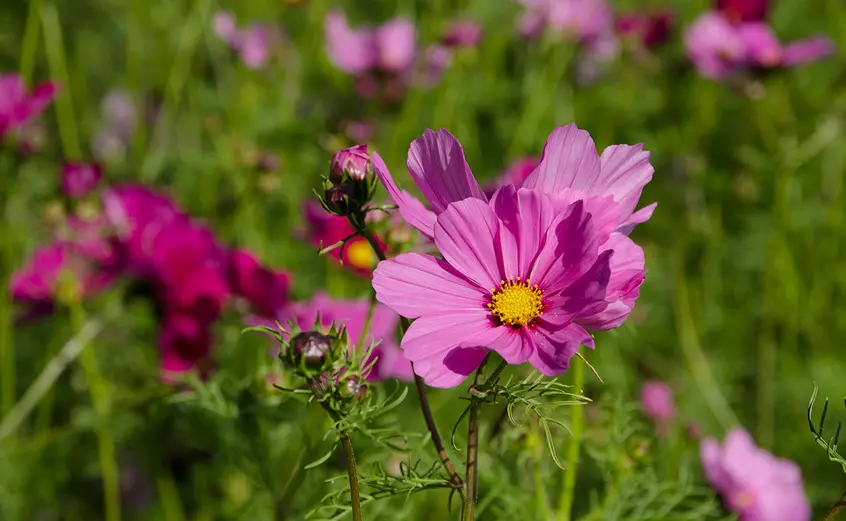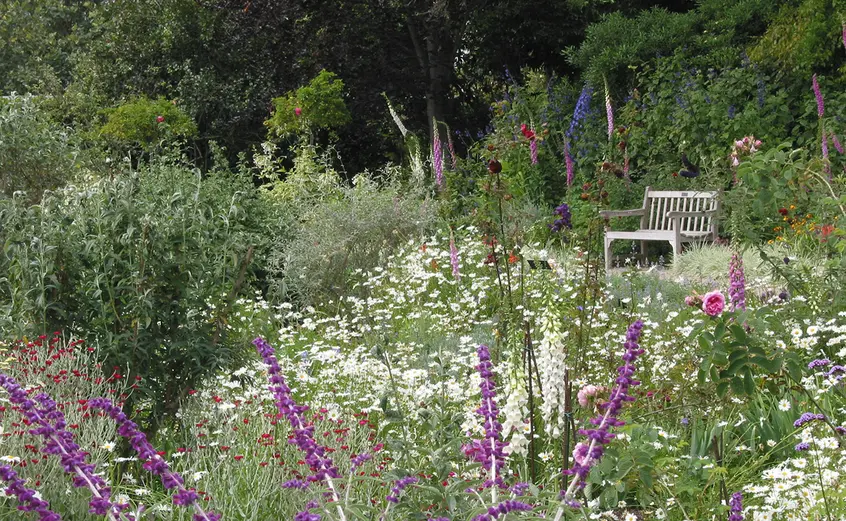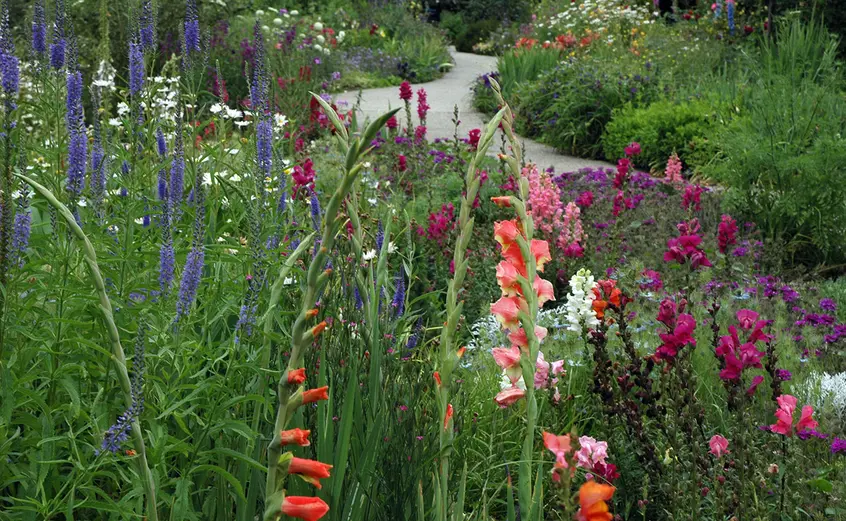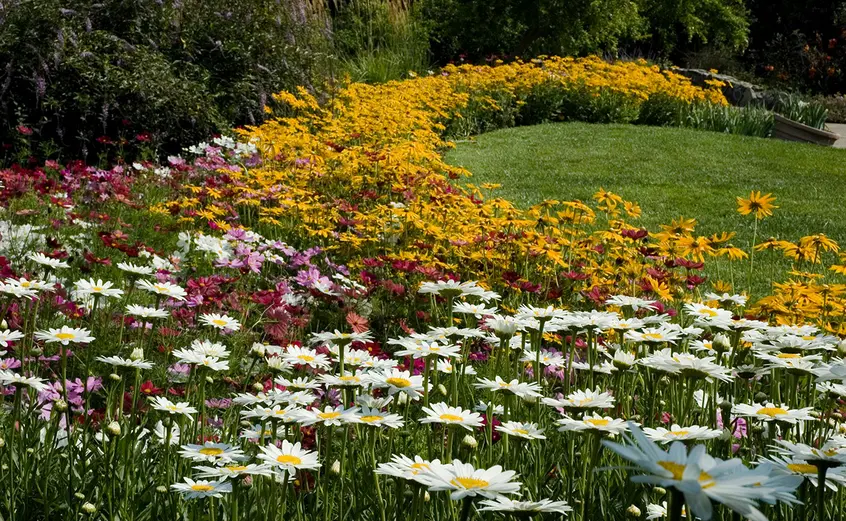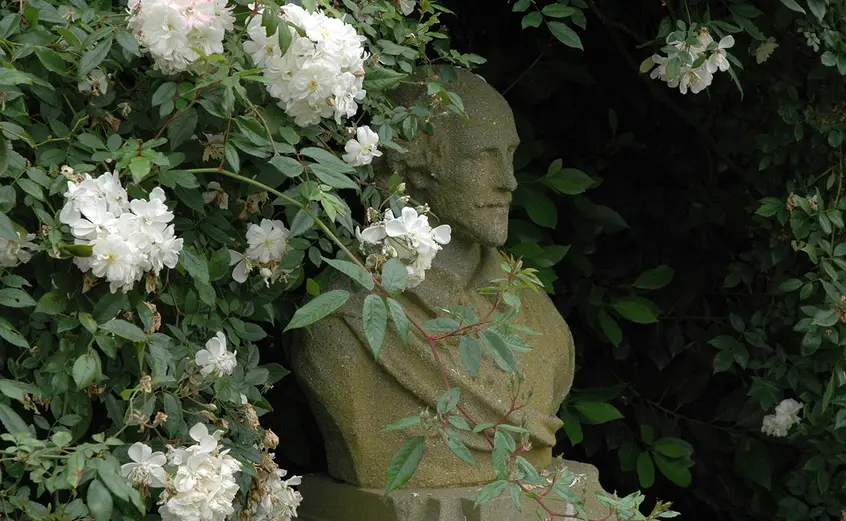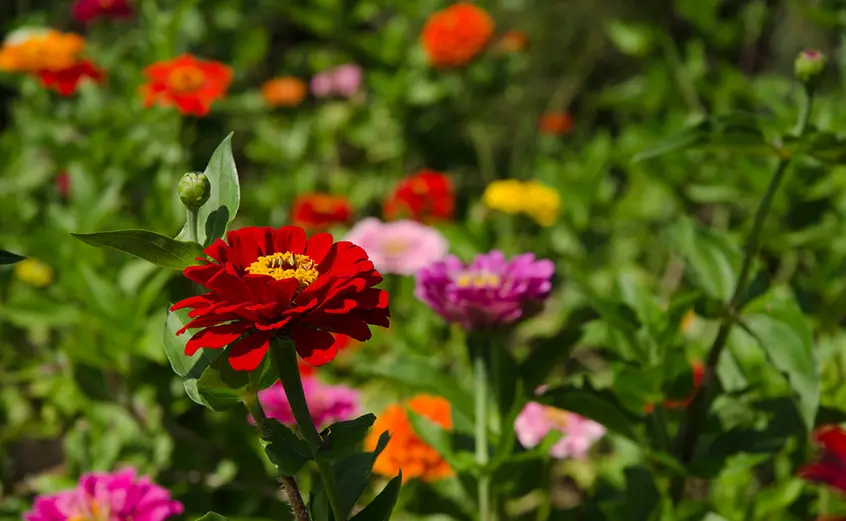
Shakespeare Garden
Roses are the most often mentioned flower in Shakespeare's work. Here in the garden, visitors will find some of the old damask and musk rose varieties dating back to Roman and Renaissance times that would have been familiar to him, plus modern examples of roses whose flower forms were common in that era. The wonderfully fragrant 'William Shakespeare 2000' rose is along the western path. Its color and form could well resemble the "deep vermilion" rose mentioned in Sonnet 98. Framed entirely by roses, a bust of Shakespeare commemorates the author of 37 plays, 154 sonnets and two narrative poems—many of them found in early editions in the Library.
While it has no connection to Shakespeare, the flagpole in the garden has a fascinating story all its own. It was made from the single trunk of a Douglas fir from the Pacific Northwest. Brought by ship to Redondo Beach, it was loaded onto two horse-drawn wagons and hauled through the streets of Los Angeles to the Huntington in the autumn of 1909. The flagpole is 148 feet long with 132 feet above the ground with 16 embedded in concrete below ground.
Whether or not our visitors are aficionados of the Bard, they all appreciate the eye-catching, year-round floral display. Originally established in 1959, the garden today is designed with the stylized look of a pastoral woodland glade. The trees and shrubs are accented by both annuals and perennials used in great sweeps of color through the gently rolling landscape. Shadi Shihab, Curator of the Floristic Gardens, boasts "The Shakespeare Garden has become a favorite photo opportunity for our visitors." And our no-spray policy also makes it a very friendly atmosphere for many birds and butterflies.
Plantings are changed out frequently to keep the dazzling display of textures and colors. Even if you visit us often throughout the year, you'll always be surprised by something new in the Shakespeare Garden.
